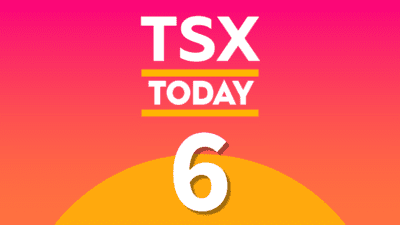Your TFSA (Tax-Free Savings Account) was meant for investing over very long periods. Still, many beginner investors may find they’re overly active with their buying or selling. It’s not a mystery as to why many new investors are so jittery to get started investing, with all the incentives to trade. Undoubtedly, trading commissions are the lowest they’ve been.
TFSA: For investing, not trading!
In the United States, trading commissions are at zero, and in Canada, they’re en route to hit zero at some point over the next decade. Indeed, just because you take more action does not mean you should strive to, especially with your TFSA retirement fund. If anything, more trading activity can hurt your returns.
Undoubtedly, many beginner investors may be confused as to the differences between trading and long-term investing. It doesn’t help that many big banks tout their brokerages as places to trade, with offers of a certain number of free trades for signing up. Indeed, the only thing that active trading does is fatten up the wallets of your broker.
Don’t overcomplicate investing! Keep it simple
At the end of the day, you only need to make a handful of moves in any given year. If you put in the research well beforehand, you may not even need to trade as much as you initially thought. Turning a $12,000 TFSA into $20,000 may seem daunting. However, it doesn’t have to be. Instead of trying to double or triple over a brief timespan (doing so can lead you into trouble, as we found out this year), seek to double over five to 10 years.
Looking to turn your $12,000 TFSA into $20,000 or more? Set realistic targets!
Be realistic with your return assumptions. Otherwise, you’ll be left disappointed if you cannot meet the high bar you’ve set for yourself. Further, you could find yourself steering your TFSA fund into trouble by speculating on high-upside bets that come with an equally high risk of losses. If you plan to double up, only to see your investment get in cut or worse, the job of doubling in 10 years — a realistic target — becomes out of reach, and it’s a real shame.
This is not the type of environment that’s been kind to those who chase high-multiple stocks or speculate. The tech-focused selloff may be far from over. That’s why it’s wise to stick with value and the types of names that have a relative margin of safety when it comes to your TFSA. Stay diversified, and don’t feel the need to score a return that’s brag-worthy! The WallStreetBets community was built on karma and praise of others for big gains and losses. Strive to be less remarkable and even boring such that you’d not get any karma for discussing any of your investments!
Hydro One: Keeping it easy with your TFSA retirement fund
It doesn’t get more boring than Hydro One (TSX:H), a monopolistic utility that has a wide moat surrounding its share of Ontario’s transmission lines. Though the company will struggle to grow when times are great, it will continue to deliver expected performance when the sky begins to fall. With a recession on the horizon, Hydro One ought to be viewed as a safe haven to own for the long haul.
Sure, it won’t allow you to double up next year or even in three years. However, over the next five or six years, it can help you en route to growing your $12,000 TFSA (that’s two years’ worth of contributions) into $20,000. A 66.6% total return in five years is entirely realistic. And with a name like H stock, you don’t need to risk your shirt. It’s that simple.








